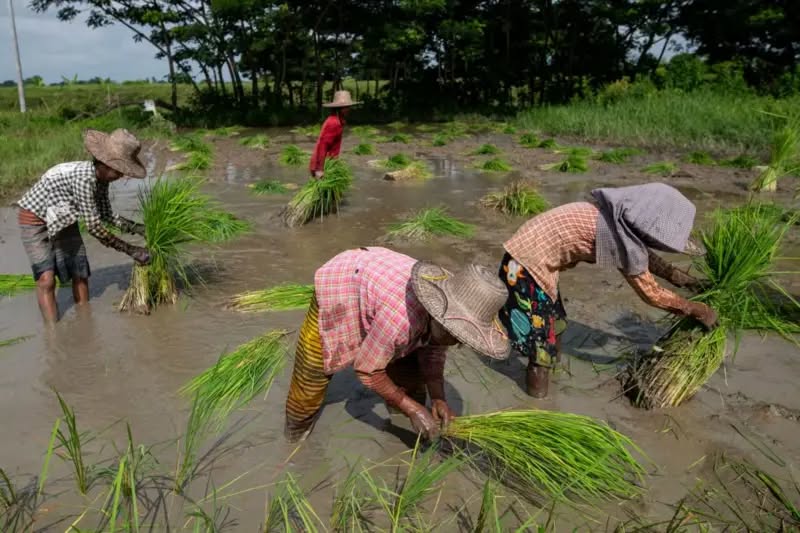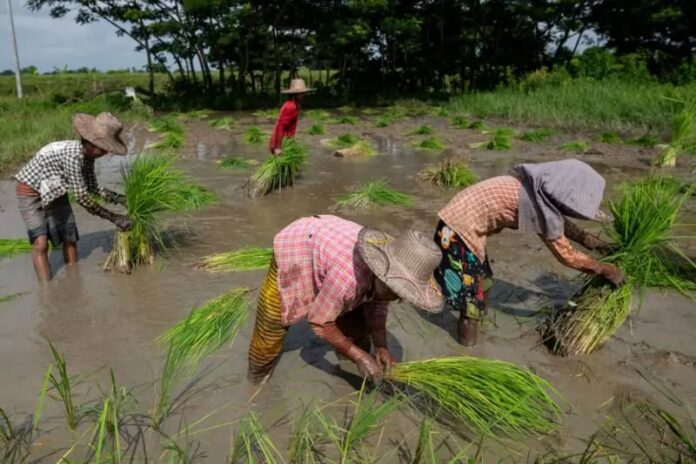Farmers across the Mon region are facing increasing difficulties during the rainy season rice-planting period each year, driven by a steady decline in the number of young and able-bodied agricultural workers.
According to farmers and agricultural support groups, the labour shortage in 2025 has become more severe than ever before.
A paddy farmer from Kamarwet Town explained that the scarcity of workers has forced them to pay significantly higher wages to secure labourers during the planting season.

“Since the political instability began, it has become extremely difficult to find workers in the Mon area. Hiring people from other regions is also challenging. As a result, we mostly rely on relatives or local community members—but even then, we have to pay high wages to get help,” said farmer Nai Dae.
The shortage affects both male and female labourers. Amid rising commodity prices and ongoing political turmoil, daily wages have steadily increased across all sectors.
This year, farmers report that daily wages for rice planting have reached as high as 30,000 kyats per day.
“It was already difficult to find rice field workers in Mon long ago. Since the military coup and worsening political unrest, most working-age people have migrated to Thailand. Now, there are only a few migrant workers left in the villages. The combination of labour shortages and the demanding nature of farm work has left many fields uncultivated,” said another farmer.
The scarcity of workers has forced some farmers to scale back their activities or leave parts of their land fallow, leading to broader consequences for food production.
As the rural workforce continues to dwindle, more people are abandoning farming altogether, raising concerns over future rice yields.
Labour migration from the Mon region to Thailand has long been common. However, following the military junta’s takeover and the imposition of martial law, cross-border migration has intensified further.
As a result, local farmers are grappling with increasingly difficult conditions, reduced cultivated acreage, and declining agricultural output.

